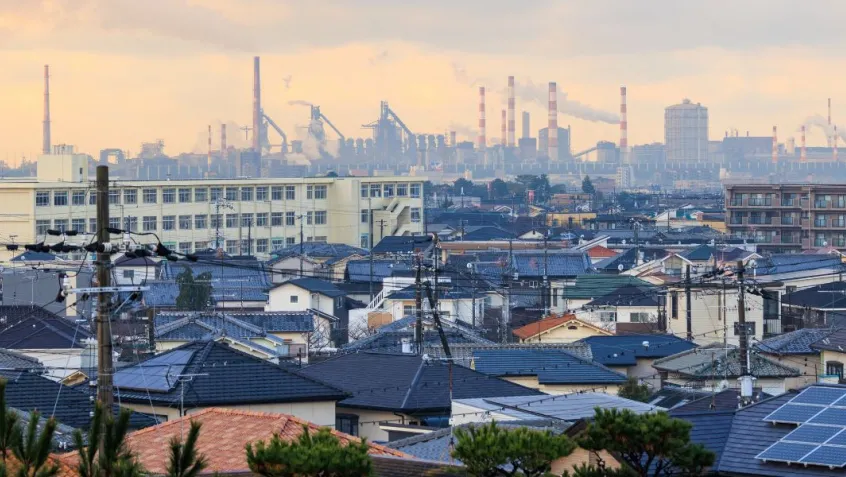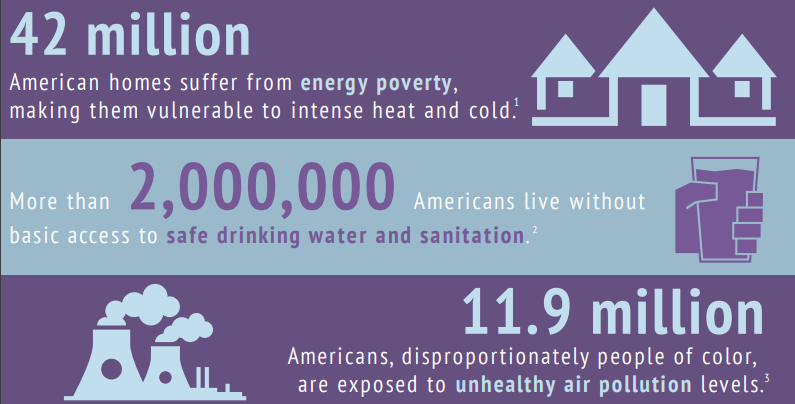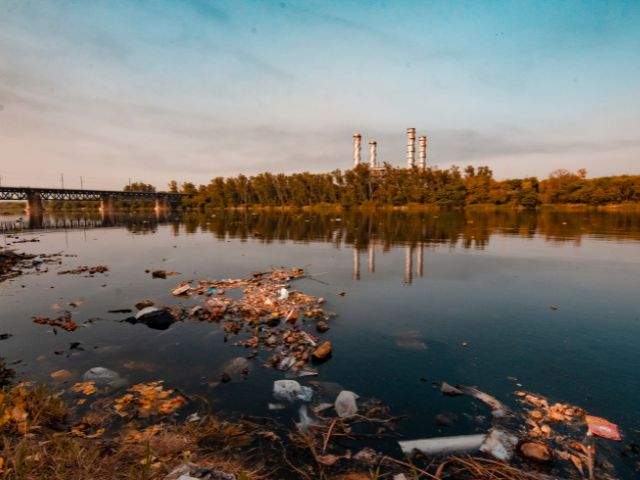
Everyone deserves the opportunity to live the healthiest life possible. But for many communities across the country, environmental risk factors like chemical pollution, air pollution, and poor water quality are part of daily life, serving as stark reminders of a legacy of social and economic inequality and neglect.
With roots in the Civil Rights Movement of the 1960s, the environmental justice (EJ) movement seeks to ensure equal access to a healthy environment by eliminating health disparities through the fair treatment and meaningful involvement of all people in environmental health policies, research, and programs.

What Is Environmental Justice?
The principles of environmental justice were formally defined in the 1990s. At its core is an acknowledgment that place matters. Where we live impacts our mental and physical health and well-being, directly and indirectly.
The environmental justice movement is focused on achieving health equity—striving for the highest possible standard of health for all people and giving special attention to the needs of those at greatest risk of poor health based on social conditions. Health disparities are defined as differences in health outcomes among segments of the population determined by social, demographic, environmental, or geographic categories.
Liaison to NEEF's Ex-Officio Board Leads NEW HHS Office of Environmental Justice
In support of this goal, a new Office of Environmental Justice (OEJ) was established in May 2022 at the US Department of Health and Human Services (HHS), with Dr. Sharunda Buchanan at the helm as Interim Director. The OEJ works to protect the health of communities on the frontlines of pollution and other environmental hazards.
Trained in chemistry, toxicology, and biochemistry, Dr. Buchanan brings decades of experience leading large-scale environmental health initiatives for the Centers for Disease Control and Prevention (CDC) and other governmental agencies.
“As the second of four children, I've always been the altruistic one,” said Dr. Buchanan. “My father—an educator, administrator, and a tireless civic leader—was committed to environmental justice. He spent many years advocating for Texas communities that faced a number of environmental injustices such as disproportionate exposures to chemicals and illegal dumping.”

When Dr. Buchanan began her professional career as an environmental health scientist more than 30 years ago, many lower-income and racial and ethnic minority communities struggled with legacy pollution issues. Exposure to lead, mercury, and other chemicals from nearby industrial sources resulted in health disparities such as asthma, lead poisoning, and cancer.
“We must recognize that racial and ethnic minority populations and communities with lower incomes are disproportionately burdened by environmental hazards,” said Dr. Buchanan. “They are exposed to environmental threats that drive health disparities, are under-resourced, and are surrounded by social inequities. The combination of environmental risks and social inequities create a cumulative, disproportionate impact that hinders optimal health and environmental justice for these populations and must be addressed.”
Planning for a More Equitable Future
Last summer, Dr. Buchanan and the OEJ launched the framework for an environmental justice strategic plan that is focused on short-term, concrete actions alongside thoughtful, long-term planning. She also convened an environmental justice working group to identify services and programs throughout HHS that will provide solutions.
The OEJ will soon work directly with communities to provide technical and field support, with regional health administrators serving as liaisons with federal, state, tribal, territorial, and local health officials.
Ultimately, Dr. Buchanan wants people to feel empowered to shine a spotlight on environmental injustices that they experience.
“Environmental justice and health go hand-in-hand, from contaminated drinking water to breathing polluted air and exposure to hazardous chemicals the list goes on,” she said. “The OEJ is poised to work with agencies to connect the environmental, infrastructure-related issues to health and human services expertise that will bring technical assistance and relief to disadvantaged communities.”

Measuring the Environmental Burden
To that end, the CDC and HHS recently released the Environmental Justice Index (EJI). It is the first national, place-based tool designed to measure the cumulative impacts of environmental burden through the lens of human health and health equity. Healthcare professionals and community members alike can use the EJI to learn more about environmental risk factors—and work to minimize their impacts.
“The EJI can help public health officials, policy makers, and communities identify and respond to the unique environmental and social factors that affect a community's health and well-being,” said Dr. Buchanan.
Specifically, EJI databases and maps can be used to:
- Identify areas that may require special attention or additional resources to improve health and health equity
- Educate and inform the public about their community
- Analyze the unique, local factors driving cumulative impacts on health to inform policy and decision-making
- Establish meaningful goals and measure progress toward environmental justice and health equity
The Next Generation of Environmental Justice
While progress has been made, the OEJ's mission underscores that the work toward environmental justice is not done. Looking ahead, Dr. Buchanan has noticed many young people have grown up with an increased awareness of health inequalities.
“Many young people see these challenges as long-standing generational issues and are working hard to address them,” Dr. Buchanan said. “They, too, recognize, environmental justice must be pursued to realize health equity.”
For Dr. Buchanan, this point hits especially close to home. Just as she followed her father's footsteps in the pursuit of environmental justice, her daughter is doing the same, having just completed her seventh year of service at the US Environmental Protection Agency.
Do you want to get involved, too? NEEF offers resources for healthcare professionals and others who would like to learn more about environmental justice:
- Nature-Based Trauma-Informed Care in BIPOC Communities: In September 2022, NEEF and the US Forest Service (USFS) hosted a webinar to share strategies for healthcare professionals, outdoor interpretive and volunteer staff, and community organizations looking to use nature as a tool for promoting wellness, resilience, and recovery to their patients and community.
- Children's Environmental Health Series: The 2021 Children's Environmental Health Series focused on the impact of environmental factors on children's health and well-being. The panel and activities engaged medical and public health professionals in discussions that explored prominent issues affecting marginalized people and presented evidence-based methods for integrating best practices for broad implementation.
- Pediatric Asthma Initiative: Review more information about asthma care and management for medical and public health professionals, including a free eLearning course developed to help pediatric healthcare providers and clinicians manage environmental asthma triggers and intervention strategies.


